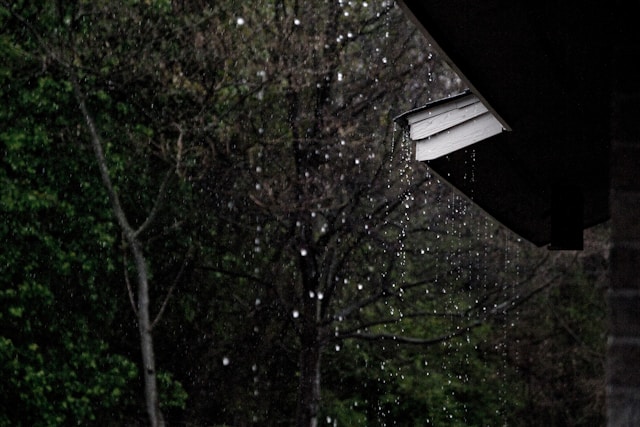
10 Tips for Weather-Proofing Your Home
Weather-proofing your home is an essential measure that not only protects your property from various environmental threats but also ensures that your living space remains comfortable and energy-efficient. From torrential rains and scorching heat to freezing temperatures, homes are subjected to a wide range of weather conditions that can cause significant damage if not properly managed. This is especially true in places like Memphis, where the weather can change dramatically with the seasons, posing unique challenges to homeowners. By implementing strategic weather-proofing measures, you can safeguard your home, reduce energy costs, and enhance your overall comfort. Here are some foundational tips to help you fortify your home against the elements.
-
Start with an Inspection
The first step in effective weather-proofing is to conduct a thorough inspection of your home. Look for signs of wear and tear on the roof, siding, windows, and doors. Check for cracks and gaps where air and water could potentially enter. Don’t forget to inspect the basement and attic, as these areas are particularly prone to unnoticed leaks and insulation issues. Consider hiring a professional inspector if you’re not sure what to look for, as they can provide a detailed assessment and identify less obvious vulnerabilities.
-
Upgrade Your Roof
The roof is your home’s first line of defence against weather elements, making it crucial to ensure it’s in top condition. In Memphis, where weather conditions can be harsh, it’s advisable to seek out reputable Memphis roofing services for a professional evaluation. A well-maintained roof should have intact shingles, proper sealing, and adequate insulation. Consider upgrading to high-quality materials that offer better durability and weather resistance if your roof shows signs of aging or damage. This is an investment that not only protects against immediate weather threats but also extends the overall lifespan of your home.
-
Seal Windows and Doors
Windows and doors are common entry points for drafts and moisture. To prevent air leaks and water damage, ensure that all gaps and cracks around window frames and doorways are sealed properly. Use weather stripping to seal movable components, and apply caulking around stationary parts of windows and doors. This not only helps to keep your home dry and draft-free but also improves energy efficiency by maintaining stable indoor temperatures and reducing the burden on your heating and cooling systems.
-
Clear Gutters and Downspouts
It’s crucial to maintain clear gutters and downspouts to effectively channel rainwater away from your home’s foundation and avoid water damage. Make sure to regularly clean out any leaves, twigs, and debris that could lead to clogs. Regular cleaning, especially after heavy storms or during fall when leaves are abundant, will keep water flowing correctly and prevent overflow. Additionally, make sure that downspouts direct water several feet away from your home’s foundation to avoid any potential for water damage.
-
Reinforce Siding
Siding not only adds to the aesthetic appeal of your home but also plays a significant role in protecting its structural integrity. Inspect your siding for any signs of damage such as cracks, warping, or loose panels that could allow water to enter and cause damage. Depending on the type of siding you have, consider adding a protective coating or sealant that can help defend against weather-related deterioration and improve its resistance to moisture and decay.
-
Install Storm Windows and Doors
Adding storm windows and doors provides an extra layer of protection against severe weather conditions. These additions help to reduce air infiltration, increase insulation, and protect your primary windows and doors from the impact of heavy rain, hail, or wind. Especially in regions with frequent storms, such as Memphis, storm windows and doors are a practical investment that can enhance both safety and comfort, reducing the need for frequent repairs and maintenance due to weather damage.
-
Update Insulation
Proper insulation is critical for weather-proofing your home, as it directly affects energy efficiency and indoor comfort. Assess and upgrade the insulation in key areas such as the attic, walls, and basement. This can help maintain a consistent indoor temperature by preventing heat from escaping during the winter and keeping it out during the summer. High-quality insulation also helps in reducing heating and cooling costs significantly. Ensure that any gaps or leaks in existing insulation are patched up to avoid energy wastage.
-
Consider Landscaping Solutions
Landscaping can play a strategic role in protecting your home from adverse weather conditions. Plant trees strategically to provide natural windbreaks and to shade your home from intense sun exposure, which can help keep your home cooler during hot months. Consider the slope of your land and adjust it if necessary to direct water away from your home, preventing potential foundation issues. Also, choose local plants that are durable and can withstand the local climate, which will require less maintenance and be more sustainable.
-
Secure Outdoor Objects
Loose outdoor items can become dangerous projectiles during storms with high winds. Secure patio furniture, garden tools, and other movable objects to prevent them from being blown away or causing damage to your home. Installing permanent anchors or storing items in a shed can ensure they stay put during bad weather. Additionally, consider the construction of structures like gazebos or pergolas to ensure they are sturdy enough to withstand weather extremes.
-
Check Foundations for Cracks
The foundation is essential for the structural integrity of your home. Regularly inspect your foundation for any signs of cracks or damage. Water seepage through these cracks can lead to significant issues, including mould and weakening of the foundation. Early detection and repair can prevent expensive problems down the line. Ensure proper drainage around the foundation, and consider waterproofing measures to keep your basement dry and secure from water damage.
Staying Safe and Secure
Weather-proofing your home is a proactive measure that not only enhances comfort and reduces utility costs but also safeguards your property from the diverse impacts of severe weather. By integrating the strategies outlined—from enhancing structural elements to updating insulation—you can ensure your home is well-equipped to handle anything nature throws its way. Embracing these practices not only contributes to the longevity and efficiency of your home but also provides peace of mind, knowing that your living space is fortified against the elements and your family is protected.
Share the love.
Related
You May Also Like

5 reasons why you should book a family cruise
January 17, 2024
5 Best Online Courses For Stay At Home Mums.
December 8, 2021



